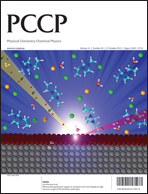By finely tuning the electrospun parameters (feeding rate of solution, working voltage and distance, etc.) and concentration of inorganic salts, various ZnAl2O4 nanostructures (nanoparticles, nanonecklaces, nanofibers, nanotubes and hollow micromelts) were controllably synthesized by a single-nozzle electrospinning technique. The formation mechanisms of different ZnAl2O4 nanostructures, including ‘oriented attachment’ mechanism, ‘gas-push’ mechanism, etc., were proposed to elucidate the morphology of the nanostructures and microstructure evolvement process. The morphology and microstructure of calcined electrospun nanostructures were considered to be mainly dependent on two factors, i.e. concentration of inorganic salts and size of as-prepared electrospun nanofibers. Using Ni2+ ions as activators, broadband near infrared (NIR) emission covering 1000–1400 nm peaking at about 1176 nm was detected in Ni2+-doped ZnAl2O4 nanostructures. The broadband NIR emission at around 1.3 μm optical communication window with a long lifetime of ∼640 μs makes Ni2+-doped ZnAl2O4 nanostructures as a promising candidate for micro/nano-broadband optical amplifiers, fibers, etc.

You have access to this article
 Please wait while we load your content...
Something went wrong. Try again?
Please wait while we load your content...
Something went wrong. Try again?


 Please wait while we load your content...
Please wait while we load your content...